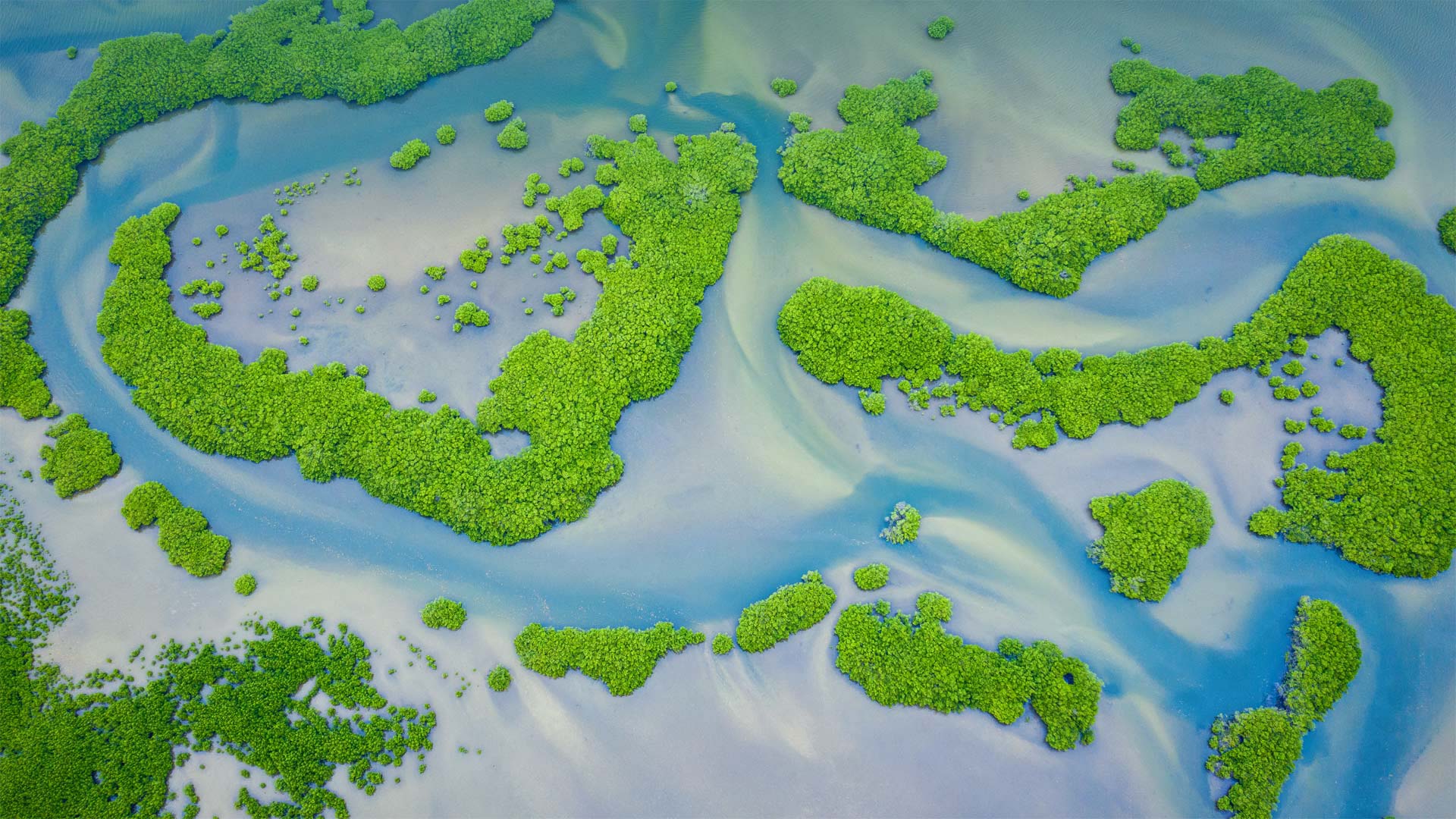标签 塞内加尔 下的文章
萨卢姆三角洲国家公园的红树林,塞内加尔共和国 Mangrove forest in the Saloum Delta National Park, Senegal (© mariusz_prusaczyk/Getty Images)

萨卢姆三角洲国家公园的红树林,塞内加尔共和国 Mangrove forest in the Saloum Delta National Park, Senegal (© mariusz_prusaczyk/Getty Images)
被人类遗忘的森林 Our forgotten forests
Mangrove Conservation Day
Although we think of forests as trees on land, some of the most important trees grow in water, or more precisely marshland. Mangrove forests, like this one in Saloum Delta National Park in Senegal, are vital components of the world's coastal ecosystems. Mangroves survive where no other trees can, in salty, low-oxygen coastal waters exposed to tides and storms. They grow up to 30 feet high primarily in tropical and subtropical regions and are able to store vast amounts of carbon, making them crucial to moderating our climate. Mangroves also act as nurseries for fish and aquatic life. And with their complex interwoven root system, they protect coastlines from erosion. Today we join the UN in shining a light on the necessity and fragility of mangroves: July 26 is the International Day for the Conservation of the Mangrove Ecosystem.
The Saloum Delta is part of a UNESCO World Heritage Site, and a sterling example of the biodiversity of marshlands. These shallow, brackish channels contain about 200 islands and islets and support all kinds of marine life and birds. Dolphins and caimans swim in its creeks. Monkeys, warthogs, buffaloes, rhinos, and giraffes roam the savanna farther inland. The park biosphere includes salt flats, estuaries, and of course mangrove forests. Humans have also long inhabited this delta, fishing its waters and cultivating shellfish from giant mounds. For as long as 2,500 years, people have flourished off the bounty of this delta, a bounty made possible by the sturdy mangrove, the bedrock for these marshes, and the keepers of our coastlines.
红树林保护日
虽然我们认为森林是陆地上的树木,但一些最重要的树木生长在水中,或者更准确地说是沼泽地。红树林,比如塞内加尔萨卢姆三角洲国家公园的红树林,是世界沿海生态系统的重要组成部分。在暴露于潮汐和风暴的咸水、低氧海岸水域,红树林在其他树木无法生存的地方生存。它们主要在热带和亚热带地区生长到30英尺高,能够储存大量的碳,这对调节我们的气候至关重要。红树林也是鱼类和水生生物的苗圃。它们复杂的根系交织在一起,保护海岸线免受侵蚀。今天,我们加入联合国,共同关注红树林的必要性和脆弱性:7月26日是国际红树林生态系统保护日。
萨鲁姆三角洲是联合国教科文组织世界遗产地的一部分,也是沼泽地生物多样性的典型代表。这些浅微咸水水道包含约200个岛屿和小岛,支持各种海洋生物和鸟类。海豚和凯门鳄在小溪里游泳。猴子、疣猪、水牛、犀牛和长颈鹿在更远的内陆草原上漫游。公园生物圈包括盐滩、河口,当然还有红树林。人类也长期居住在这个三角洲,在其水域捕鱼,并在巨大的土堆中养殖贝类。长达2500年的时间里,人们靠着这片三角洲的富饶而繁衍生息,这片富饶的土地是由坚固的红树林、这些沼泽的基岩和我们海岸线的守护者所促成的。